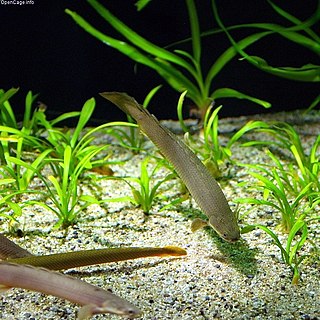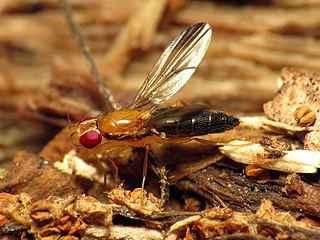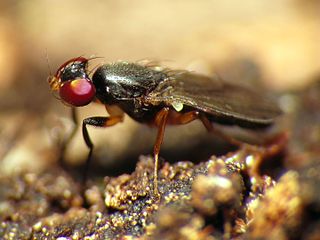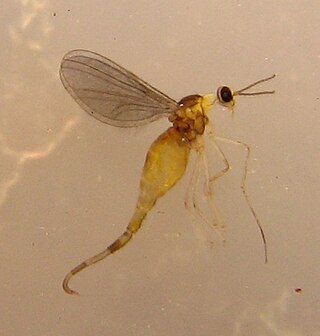
Mealybugs are insects in the family Pseudococcidae, unarmored scale insects found in moist, warm habitats. Of the more than 2,000 described species, many are considered pests as they feed on plant juices of greenhouse plants, house plants and subtropical trees and also act as a vector for several plant diseases. Some ants live in symbiotic relationships with them, protecting them from predators and feeding off the honeydew which they excrete.

The Nematoceran family Axymyiidae is the sole member of the infraorder Axymyiomorpha, though it is often included within the infraorder Bibionomorpha in older classifications. It is known from only nine species in four genera, plus eight fossil species.

Mycetophilidae is a family of small flies, forming the bulk of those species known as fungus gnats. About 3000 described species are placed in 150 genera, but the true number of species is undoubtedly much higher. They are generally found in the damp habitats favoured by their host fungi and sometimes form dense swarms.

Cladistia is a clade of bony fishes whose only living members are the bichirs of tropical Africa. Their major synapomorphies are a heterocercal tail in which the dorsal fin has independent rays, and a posteriorly elongated parasphenoid.

Lygistorrhininae, commonly called long-beaked fungus gnats is a subfamily of flies in the Diptera family Keroplatidae. The groups was long treated as a separate family, but molecular phylogenetic analysis has shown it to belong to Keroplatidae. There are about 7 genera and at least 30 described species in Lygistorrhininae.
Polystepha is a genus of gall midges in the family Cecidomyiidae. There are more than 20 described species in Polystepha.

Clusiodes is a genus of flies in the family Clusiidae. There are at least 70 described species in Clusiodes.
Eudicrana is a genus of fungus gnats in the family Mycetophilidae. There are about 13 described species in Eudicrana.

Heteromeringia is a genus of flies in the family Clusiidae. There are more than 70 described species in Heteromeringia.

Resseliella is a genus of gall midges in the family Cecidomyiidae. There are at least 50 described species in the genus Resseliella.
Monardia is a genus of wood midges, insects in the family Cecidomyiidae. The 53 described species in Monardia are grouped into three subgenera.
Haplusia is a genus of gall midges and wood midges in the family Cecidomyiidae. There are more than 20 described species in Haplusia.

Winnertziinae is a subfamily of gall midges and wood midges in the family Cecidomyiidae.
Paleoplatyura is a genus of predatory fungus gnats in the family Keroplatidae. There are about seven described species in Paleoplatyura. Fossil species are known from the mid-Cretaceous Burmese amber of Myanmar, dating to around 100 million years ago.
Mycetobia divergens is a species of wood gnat in the family Anisopodidae.
Heteropeza is a genus of gall midges and wood midges in the family Cecidomyiidae. There are about six described species in Heteropeza.

Winnertzia is a genus of gall midges and wood midges in the family Cecidomyiidae. There are more than 90 described species in Winnertzia.
Ectrepesthoneura is a genus of fungus gnats in the family Mycetophilidae. There are more than 20 described species in Ectrepesthoneura.
Porricondylinae is a subfamily of gall midges and wood midges in the family Cecidomyiidae.
Porricondyla is a genus of gall midges in the family Cecidomyiidae. There are more than 110 described species in Porricondyla, found mainly in Europe and North America.










